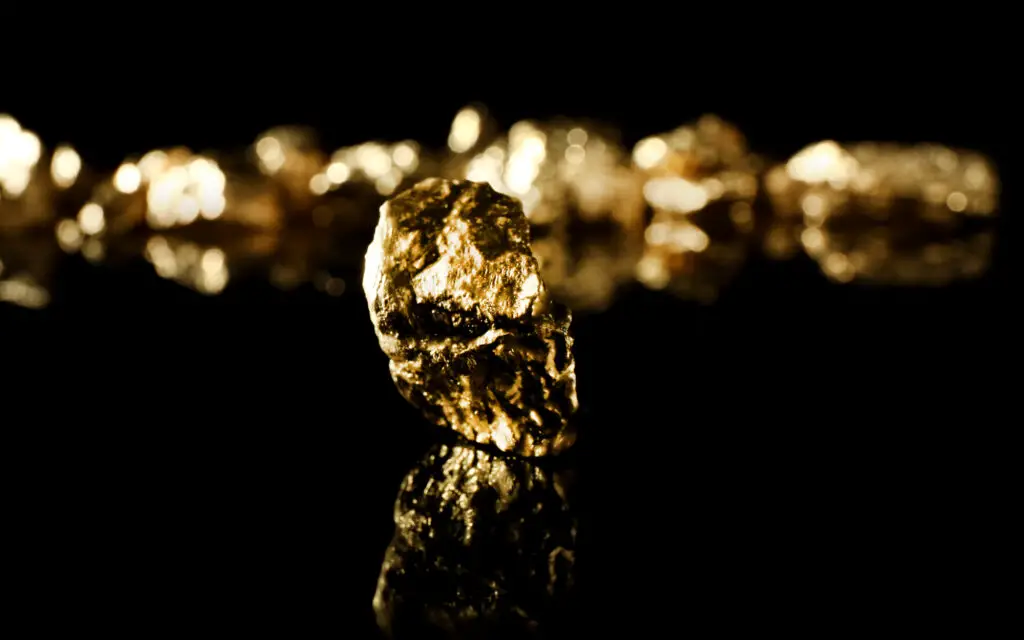Welcome to our latest blog discussing the intriguing topic of gold on Mars. The question of whether or not gold exists on the Red Planet has been a subject of much debate and speculation for many years. With recent advancements in technology and space exploration, scientists have been able to study Mars in greater detail than ever before.
Here Is Why There Is A Possibility Of Gold On Mars:
Nasa has been able to detect volcanos and water both on Mars. Both of these compounds is what creates gold here on Earth, so there is a great possibility that Gold will be on Mars, even though not one nugget has been located yet.
In this blog, we will delve into the history of the search for gold on Mars, examine the evidence for its existence, and explore the potential implications if it were to be discovered. So, sit back and join us as we embark on a journey to uncover the truth about gold on Mars.

Has Gold Ever Been Found On Mars?
As of current knowledge, gold has not been found on Mars. While there have been indications of water and other elements that are often associated with gold deposits on Earth, no gold has been definitively discovered on the planet.
However, it’s worth noting that the technology and techniques used to explore Mars are still quite limited and there are large areas of the planet that remain unexplored.
Additionally, gold is not a highly reactive element and does not easily bond with other elements, thus it would be difficult to detect it remotely on a distant planet. Therefore, it’s still possible that gold could be present on Mars, but it has not been found yet.
How Is Gold Formed?
Gold is one of the most sought-after elements on Earth. It has been used for jewelry, currency, and even as a store of value for thousands of years. But how is gold formed?
Gold is a dense, soft, and shiny metal that is yellow in colour. It is a chemical componant with the symbol Au and atomic number 79. It is a highly sought-after mineral because of its unique properties and rarity. Here are five key points on how gold is formed:
Gold is formed through a process called hydrothermal deposition. This occurs when hot water, that is rich in dissolved minerals, circulates through rock fractures and deposit minerals in the rock. The gold deposit forms as the water cools and the dissolved minerals solidify.
Gold is found in veins and nuggets. Veins are formed when hot water flows through a crack in the rock and deposits gold as the water cools. Nuggets are formed when gold is concentrated in a specific area and solidifies in a mass.
Gold is often found near other minerals such as copper, lead, and silver. This is because these minerals are often found in the same type of rock that gold is found in.
Gold is often found in mountainous regions and in areas where there has been a lot of geological activity. This is because the process of hydrothermal deposition typically occurs in areas where there is a lot of tectonic activity.
Gold is a rare element, making up only about 0.0011% of the Earth’s crust.
In conclusion, gold is a unique element that is formed through hydrothermal deposition. It is found in veins and nuggets and often found near other minerals such as copper, lead, and silver. It is typically found in mountainous regions and in areas where there has been a lot of geological activity. Despite its widespread popularity, gold is a rare element making up only about 0.0011% of the Earth’s crust.
Are There Substances On Mars That Would Confirm That Gold Could Exsist?
Water
The existence of gold on Mars is a topic of ongoing debate and speculation. While no gold has been definitively discovered on the planet, there are indications that certain substances that are often associated with gold deposits on Earth could be present on Mars.
One key factor in the formation of gold is the presence of water. Gold is typically formed through a process called hydrothermal deposition, which occurs when hot water rich in dissolved minerals circulates through rock fractures and deposits minerals in the rock. The gold deposit forms as the water cools and the dissolved minerals solidify.
Recent missions to Mars have provided evidence for the presence of water on the planet, both in the past and in the present. In 2018, NASA’s Mars Reconnaissance Orbiter (MRO) provided huge support of the proof of a liquid water lake beneath the planet’s south polar ice cap, and in 2020 the European Space Agency’s Rosalind Franklin rover discovered subsurface water close to the surface.
In addition to water, scientists have also found evidence of other minerals that are often associated with gold deposits on Earth, such as sulfates and clay minerals. While the presence of these minerals does not confirm the existence of gold on Mars, it does suggest that conditions on the planet may have been favorable for the formation of gold in the past.
It’s worth noting that, even if gold was formed on Mars, it could be hard to detect remotely from Earth. Gold is not a highly reactive element, and does not easily bond with other elements, thus it would be difficult to detect it remotely on a distant planet. Therefore, while the presence of water and certain minerals on Mars suggests that gold could exist on the planet, more research and study is needed to confirm its presence.
Volcanos
NASA has found evidence of past volcanic activity on Mars. The Mars Reconnaissance Orbiter (MRO) has provided strong evidence of the existence of volcanoes on the planet. MRO has also found evidence of lava flows, volcanic ash, and other signs that volcanic activity has occurred on Mars.
In particular, MRO has found evidence of the largest volcano in the solar system, Olympus Mons, which is a shield volcano with a height of 22km, and the largest volcano on Earth, Mauna Loa, would fit within its base. Additionally, MRO discovered a chain of three volcanoes called Tharsis Montes and other smaller volcanic features in different regions of the planet.
It’s worth noting that while these volcanoes have been inactive for millions of years, evidence of volcanic activity on Mars suggests that the planet was once much more geologically active than it is today. This could have created the conditions necessary for the formation of gold and other minerals that are associated with volcanic activity on Earth.
Is Elon Musk Looking For Gold On Mars?
As of my knowledge cut off in 2021, there is no evidence that Elon Musk or SpaceX, the company he founded, is specifically looking for gold on Mars. While SpaceX has ambitious plans to send humans to Mars in the future, the primary focus of the company’s missions to the planet has been to test technology and gather data that will be needed for future human exploration.
SpaceX’s Starship spacecraft, which is being developed to transport humans and cargo to Mars, is primarily focused on the logistics of establishing a human settlement on the planet. This includes testing the spacecraft’s ability to land and take off from the Martian surface, as well as the development of technologies that will be needed to extract resources from the planet and support human life.
It’s worth noting that, gold mining on Mars might not be a realistic goal in the short term as the cost and technical challenges of mining resources on Mars would be enormous. Additionally, it’s still uncertain if there are enough gold deposits on Mars to make mining operations economically viable. However, in the long run, if humans establish a permanent settlement on Mars, mining resources from the planet will be crucial for the survival and expansion of the colony.
In conclusion, while SpaceX has ambitious plans to send humans to Mars, the primary focus is to test technology and gather data that will be needed for future human exploration and establish a human settlement on the planet. As of now, there is no evidence that Elon Musk or SpaceX is specifically looking for gold on Mars.


